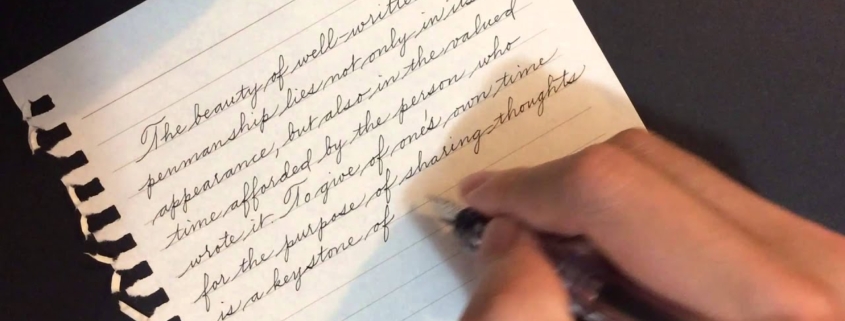HANDWRITING IS GOOD FOR YOUR CREATIVITY AND MEMORY
Annotare informazioni e appuntamenti a mano (anzichè con la tastiera) aiuta a fissare e memorizzare meglio concetti e nozioni.
Negli adulti la scrittura a mano permette, in quanto più lenta rispetto a quella su tastiera, un tempo di riflessione maggiore; mentre nei bambini facilita anche il percorso di apprendimento: permettendo loro non solo di imparare a leggere più velocemente una volta appresa la scrittura a mano, ma anche di renderli più capaci nel generare idee e conservare dati.
In altre parole, non è solo quello che scriviamo che conta, ma come lo facciamo.
EVIDENZE A SOSTEGNO
A sostegno numerosi studi, fra cui quello condotto, sui bambini, dalla psicologa dell’Università di Washington Virginia Berninger. La ricercatrice ha dimostrato che quando i bambini scrivono a mano libera, non solo producono più parole e più rapidamente di quanto facciano su una tastiera, ma esprimono anche più idee, mostrando maggiore fluidità di linguaggio e informazioni (e di attivazione neurale nelle aree associate alla memoria di lavoro e alle reti di lettura e scrittura del cervello), rispetto ai coetanei che affidano il contenuto dei loro scritti alla tastiera.
I BENEFICI DELLA SCRITTURA A MANO
I benefici della scrittura a mano si estendono oltre l’infanzia. Due psicologi, Pam Mueller di Princeton e Daniel Oppenheimer dell’University of California, Los Angeles, hanno riferito che sia nella condizione di laboratorio sia in classe, gli studenti imparano meglio quando prendono appunti a mano. “La scrittura a mano – spiegano i ricercatori – permette allo studente di elaborare i contenuti e riformularli: un processo di riflessione e di manipolazione che può portare a una migliore comprensione e codifica in memoria”
In parole semplici la scrittura su foglio “insegna” a leggere meglio, contribuisce a rinforzare le aree del cervello dove si riconosce la forma delle lettere o in cui si associano i suoni alle parole.
Conferma ulteriore arriva dalla Cina, dove si utilizza sempre di più il sistema “pinyin” di trascrizione del cinese sulle tastiere QWERTY: abbandonando gli ideogrammi scritti a mano, le diagnosi di dislessia e altre difficoltà di lettura sono in continua crescita. «Digitare una lettera non permette di comprenderne davvero la forma e le possibili variazioni che non ne alterano il significato, come invece accade quando si impara a scriverla a mano», spiega Karin James dell’Università di Bloomington, nell’Indiana.
In sintesi: quando scriviamo a mano o con la penna digitale si “accendono” più parti del cervello rispetto a quando utilizziamo la tastiera. E l’utilizzo della penna attiva aree del cervello più profonde e questo ha effetti positivi sia sulla memoria sia sull’apprendimento nei bambini e negli adulti.

